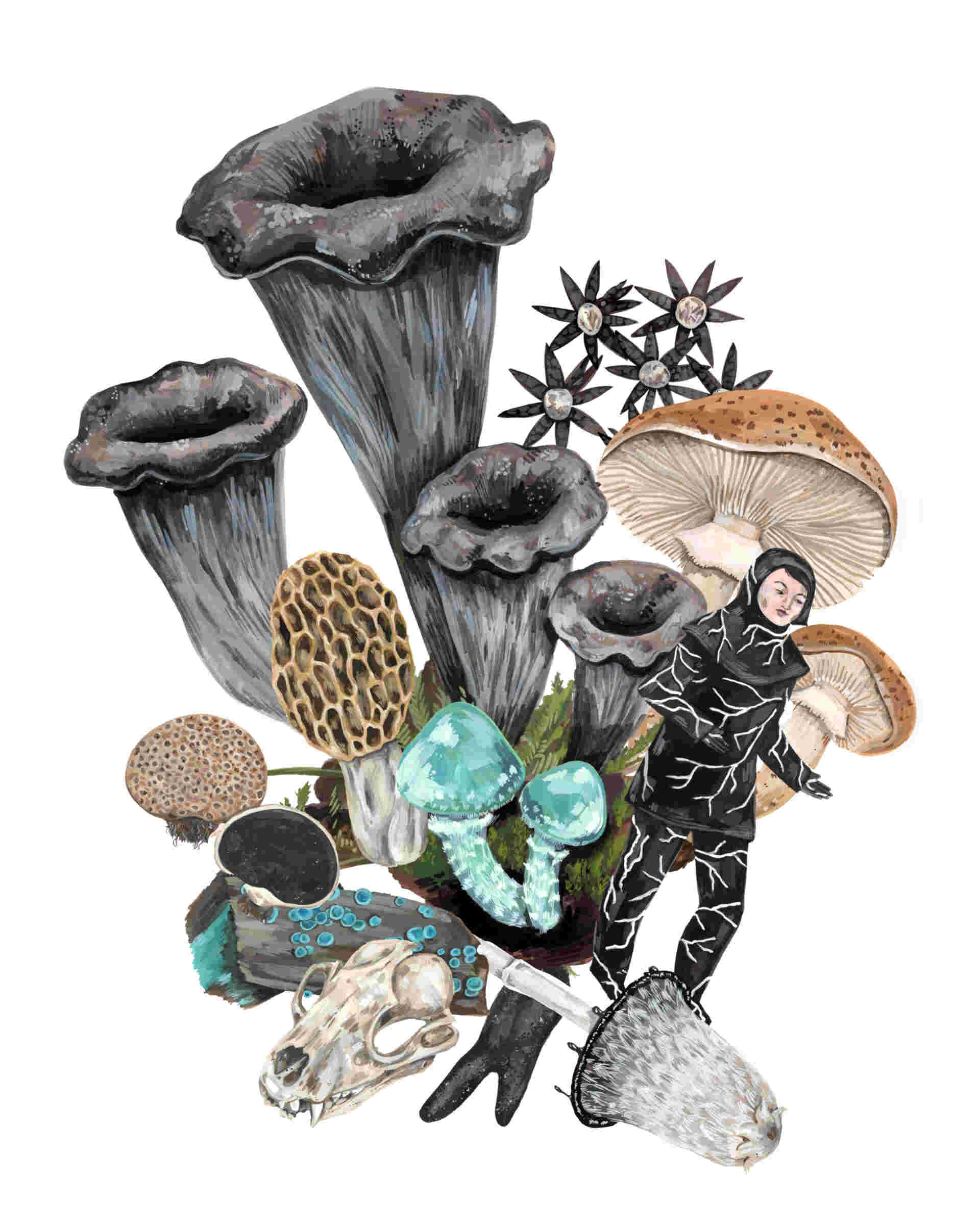
Hidden Kingdom
The Conversation On mushrooms, interdependence and artists’ role on the sustainability front.
By Daniel Bromberg

Top : Gault Brothers Building, Craig Street, Montréal, QC, 1936.
Photo courtesy of Wm. Notman & Son Ltd./McCord Museum.
James Crockett Wilson arrived in Montréal from Ireland the year after he was born, and in 1870, the not-yet 30-year-old founded a paper manufacturing company that became the first Canadian publisher to produce postcards commercially. By the end of the 19th century, J.C. Wilson & Co. Limited was one of the largest paper manufacturers in all of Canada.
The 1889-built Wilson Building, located at 380 Craig Street (now rue Saint-Antoine Ouest) and designed by architects Edward C. and John W. Hopkins, was home base to the firm—and pretty as a picture with its red-brick and sandstone facade—until 1914. (The estate sold the building in 1942.)
That facade was later restored and integrated into the design of the World Trade Centre that was inaugurated in 1992 as part of Montréal’s 350th anniversary. Comprising 11 historic buildings and housed under a glass canopy, the complex contains a stretch of the Ruelle des Fortifications—an alley that owes its name to the wall that once surrounded the city—and connects to the RÉSO, a 32-kilometre indoor network commonly referred to as the Underground City.
Allied purchased the site in 2019, adding to its own assemblage of properties in the International District that serve Montréal’s TAMI (tech, advertising, media and information) sectors, hearkening to the Wilson Building’s paper and postcard (a form of media in its own right) beginnings.